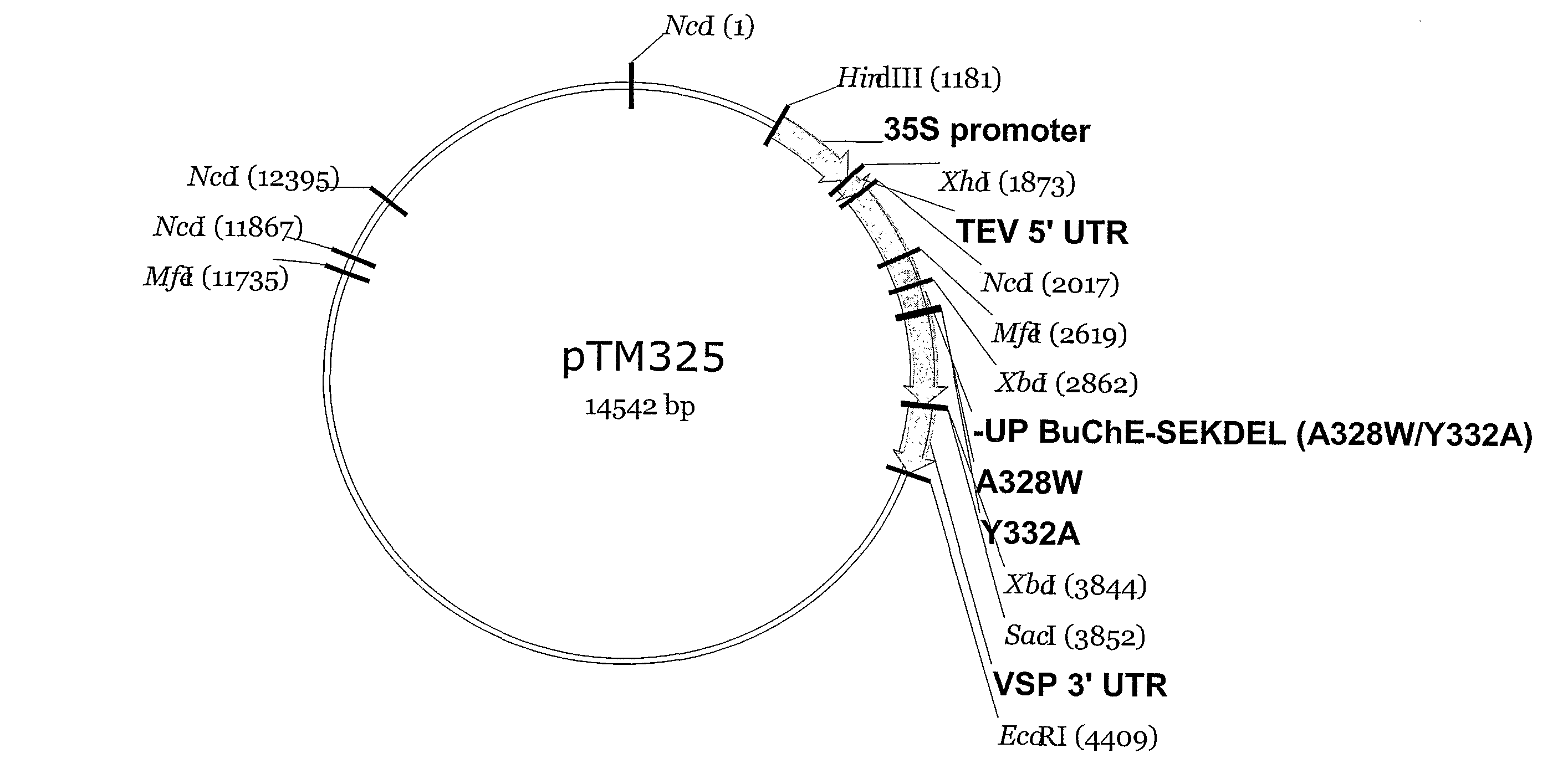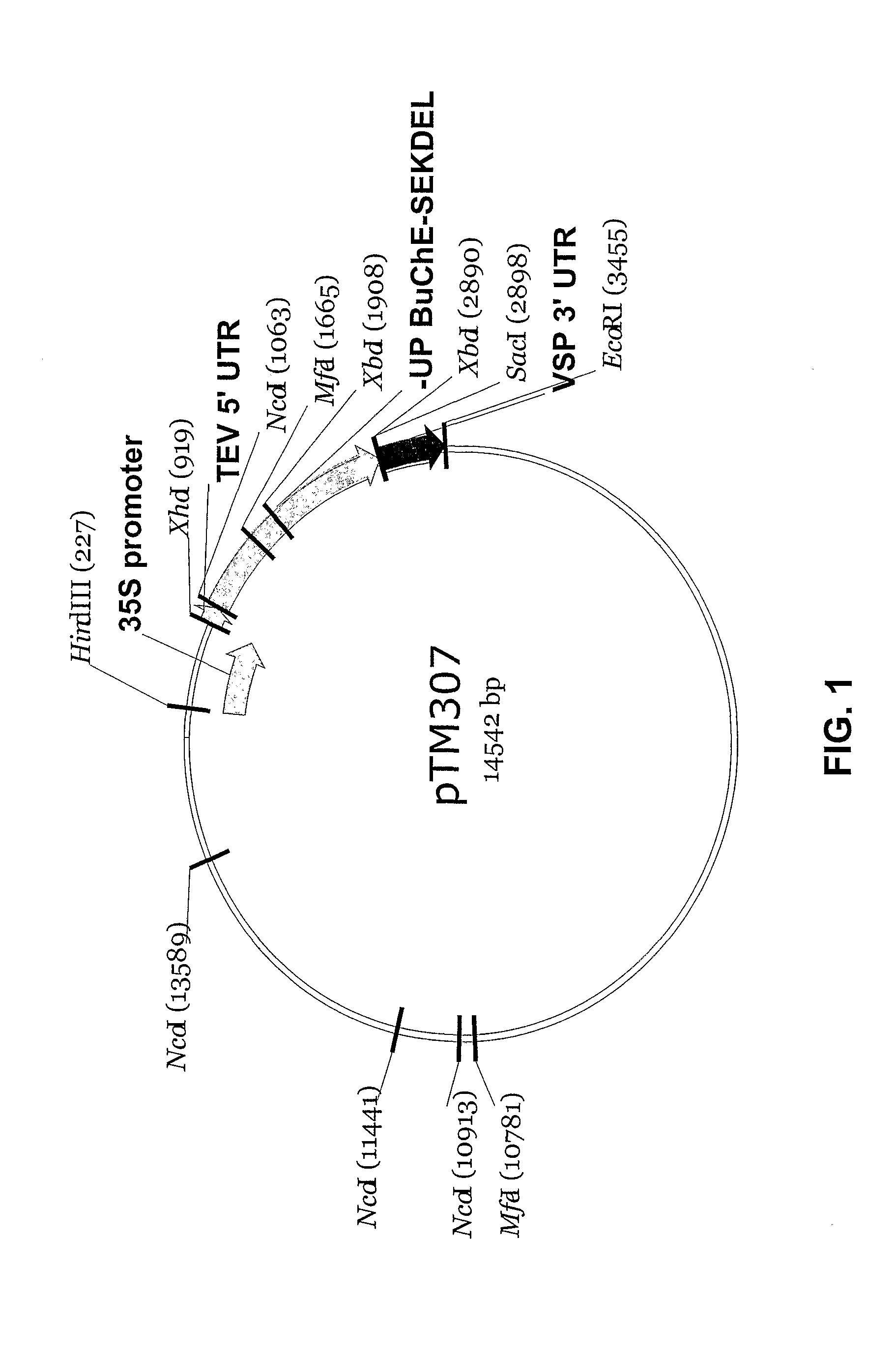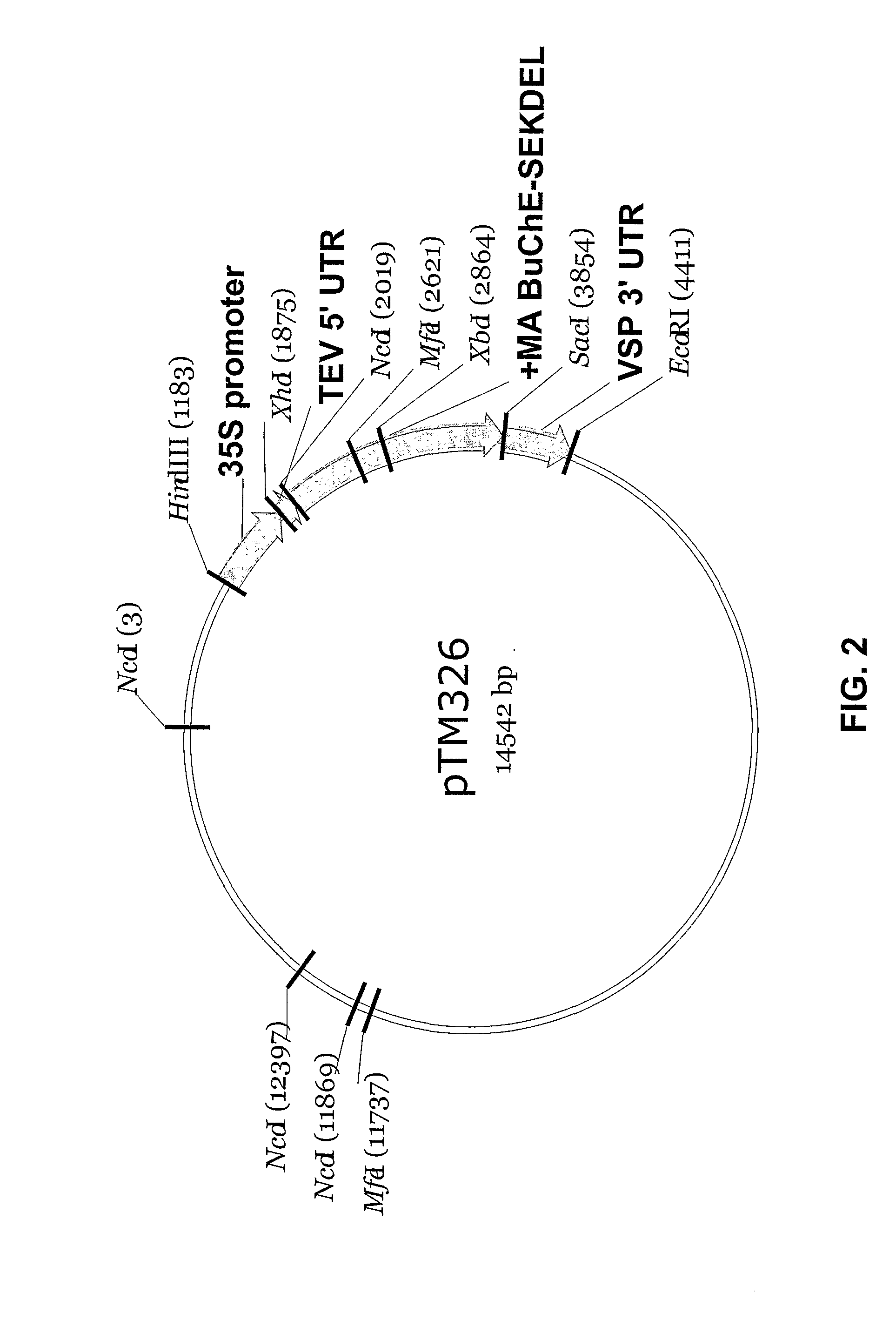Production and use of human butyrylcholinesterase
a technology of butyrylcholinesterase and production and use, which is applied in the field of transgenic plants, can solve the problems of human exposure to ops, tetany, and autonomic dysfunction, and achieves the effects of reducing the number of human exposures
- Summary
- Abstract
- Description
- Claims
- Application Information
AI Technical Summary
Problems solved by technology
Method used
Image
Examples
example 1
Optimization of Human BuChE for Plant Expression (pTM307) Removal of “Unpreferred” Codons
[0033]One strategy of optimizing human BuChE for plant production is performed by genetically modifying human BuChE to remove all unpreferred codons. As shown in Table 2 below, a codon adaptiveness index (CAI) is first constructed to determine the relative abundance of codons from highly-expressed proteins in a related plant species, Arabidopsis thaliana.
[0034]The CAI is a mathematical expression of the use of each codon relative to the use or the other codons which code for the same amino acid. A threshold of 0.8 is set, whereby codons with a CAI below this value are deemed “unpreferred”. Under this strategy, these unpreferred codons are replaced with more preferred codons. A “good” codon is defined as the codon with the highest CAI. A “good” codon is defined as the most preferred codon, which is most abundant in the sequence, and therefore is most closely associated with BuChE expression. A b...
example 2
Optimization of Human BuChE for Plant Expression (pTM326) Replacement with “Most Preferred” Codons
[0037]Another strategy of optimizing human BuChE for plant production is performed by genetically modifying human BuChE such that existing codons are removed and replaced with “most preferred” codons. Analysis of all existing Nicotiana benthamiana sequences deposited with GENBANK was conducted using the software available at the Kazusa DNA Research Institute's codon usage database. Available at http: / / www.kazusa.or.jp / codon / . As shown in Table 3, below, the most preferred codon for each amino acid is identified and the BuChE gene is optimized such that all amino acids are expressed by this codon. A “good” codon is defined as the most preferred codon, while a “bad” codon is defined as 50% less abundant than the most abundant codon.
[0038]Then, as shown in Table 3, below, the human butyrylcholinesterase sequence is codon optimized by genetically modifying human BuChE to remove all but the ...
example 3
Optimization of Human BuChE for Plant Expression (pTM325) Replacement with “Most Preferred” Codons and Targeted Mutations
[0040]As a modification of the strategy shown in Example 2, specific amino acid mutations may also be added after naturally occurring codons are replaced with “most preferred” codons. As in Example 2, analysis of all existing Nicotiana benthamiana sequences deposited with GENBANK was conducted using the software available at the Kazusa DNA Research Institute's codon usage database. Available at http: / / www.kazusa.or.jp / codon / . As shown in Table 3, above, the most preferred codon for each amino acid is identified and the BuChE gene is optimized such that all amino acids are expressed by this codon. A “good” codon is defined as the most preferred codon, which is most abundant in the sequence, and appears to be linked to optimized BuChE expression. A “bad” codon is defined as 50% less abundant than the most abundant codon.
[0041]Then, as shown in Example 2, the human b...
PUM
| Property | Measurement | Unit |
|---|---|---|
| pH | aaaaa | aaaaa |
| volume | aaaaa | aaaaa |
| pH | aaaaa | aaaaa |
Abstract
Description
Claims
Application Information
 Login to View More
Login to View More - R&D
- Intellectual Property
- Life Sciences
- Materials
- Tech Scout
- Unparalleled Data Quality
- Higher Quality Content
- 60% Fewer Hallucinations
Browse by: Latest US Patents, China's latest patents, Technical Efficacy Thesaurus, Application Domain, Technology Topic, Popular Technical Reports.
© 2025 PatSnap. All rights reserved.Legal|Privacy policy|Modern Slavery Act Transparency Statement|Sitemap|About US| Contact US: help@patsnap.com



